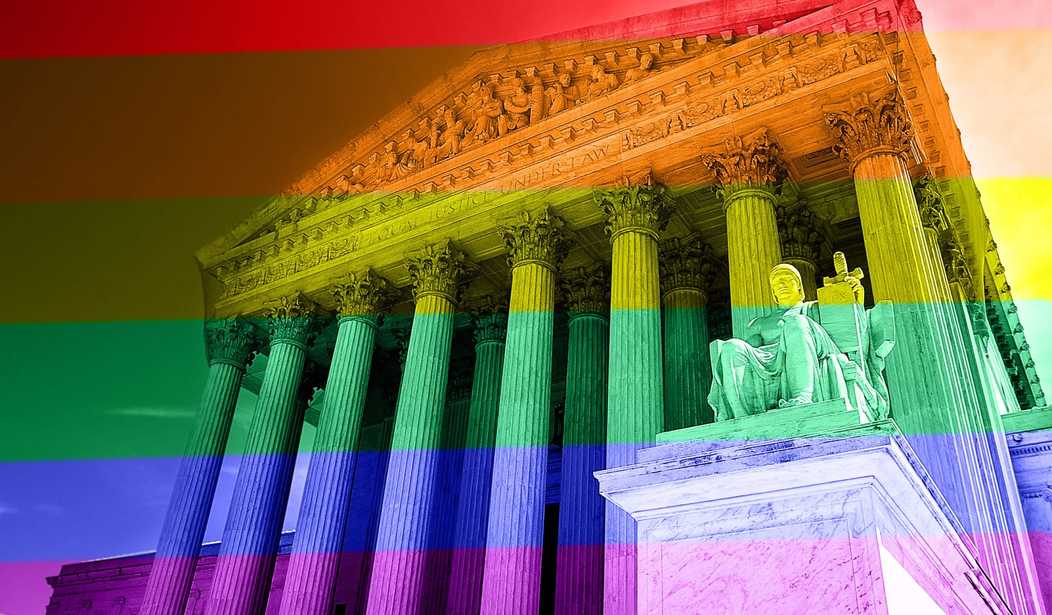When President Donald Trump nominated Brett Kavanaugh to the Supreme Court on Monday, Democrat chicken littles erupted in paroxysms of rage.
“Civil rights, women’s rights, LGBT rights, healthcare are all under attack,” the NAACP warned.
Civil rights, women’s rights, LGBT rights, health care are all under attack. We’ve seen Judge Brett Kavanaugh’s record and we demand no new SCOTUS justice until after a new Senate is seated in 2019. – @PeopleFor #StandUpFightBack #ScotusPick #SaveSCOTUS
— NAACP (@NAACP) July 10, 2018
House Minority Leader Nancy Pelosi (D-Calif.) said Kavanaugh would be “a destructive tool on a generation of progress for workers, women, LGBTQ people, communities of color & families,” and that his confirmation would “radically reverse the course of American justice & democracy.”
The Senate’s most radical socialist called for mobilization “to defeat Trump’s right-wing, reactionary nominee.”
Liberals across the country led protests, and a Fox News host had to move her show inside because she feared for her safety.
When the founders envisioned the Supreme Court, they did not intend nominations to be this contentious. Courts have always been important, but their job is to protect the rule of law, not reinterpret the law to fit their fancy. The over-politicization of the Court can be traced to the Left’s acceptance of a “living Constitution” idea that undermined the rule of law and let loose the dogs of political warfare in the arena the founders intended to be least political.
What makes Kavanaugh a “reactionary”? He actually wants to return to the text of the Constitution of the United States. President Donald Trump campaigned on naming “originalist” justices to the U.S. Supreme Court. This means his nominees would apply the text of the Constitution, rather than reinterpreting the Constitution to advocate for what they believe in.
The Left has long treated the text of the Constitution as malleable. Woodrow Wilson, one of the fathers of the “living Constitution” idea, argued that Congress should have the most power when he thought it would benefit him, and then he argued that the presidency should have the most power once he became president. Convenient. Tragically, this founder of Progressivism actually embraced the racist pro-slavery ideas of thinkers like John C. Calhoun, but that’s a story for another article.
In his book “Constitutional Government in the United States” (1908), this worst of American presidents wrote that “living political constitutions must be Darwinian in structure and in practice.” In other words, they must evolve to suit the times.
Thinkers — and later, justices — took this idea to the extreme, attempting to read new rights into the Constitution that were never intended by the founders.
In Roe v. Wade (1973), for instance, the Supreme Court reinterpreted the 14th Amendment as a right to abortion. Ironically, at the time the 14th Amendment was being ratified, abortion laws were being tightened, not loosened. Furthermore, the plain text of that amendment — which states that no state can “deprive any person of life, liberty, or property, without due process of law” — not only fails to mention abortion, but could be used as an argument to defend the lives of unborn babies.
To achieve this ruling, the Court stretched the “penumbras of the Bill of Rights” to include a right to privacy — a legacy of the 1965 contraception case Griswold v. Connecticut — and extended that into a right to abortion.
Similarly, in Obergefell v. Hodges (2015), the Supreme Court case legalizing same-sex marriage, Justice Anthony Kennedy wrote a “right to dignity” into the Constitution, twisting the Constitution which had long sanctioned laws against homosexual practice into a document enshrining a right to same-sex marriage.
Both of these decisions — Roe and Obergefell — forced legal changes on the states, arguably violating the 10th Amendment (“the powers not delegated to the United States by the Constitution, nor prohibited by it to the States, are reserved to the States respectively, or to the people”).
To be fair to the “living Constitution” thinkers, the 9th Amendment does include a broad defense of rights “retained by the people” which cannot be infringed by rights enumerated in the Constitution. This amendment cannot have been intended as a blank check for writing new rights into the Constitution, however.
The biggest problem with the “living Constitution” is Article V of the original document. The founders understood that the Constitution may need to be altered from time to time, and so they wrote into the actual document a process to alter it. Imagine that!
If the founders intended the Constitution to be altered willy nilly by the Supreme Court, they would never have done this.
While millions of Americans approve of both Roe and Obergefell, their popularity does not make them good Supreme Court decisions. Reversing them would also not automatically ban abortion or same-sex marriage — it would merely allow the states to decide for themselves. The majority of the states would almost certainly keep both practices legal.
Instead of allowing the (admittedly long and arduous) process of constitutional amendment to take place, the Supreme Court forced a momentous change on the nation, and ran roughshod over the text and intent of the Constitution.
When Democrats complain that nominating originalist judges means a “reversal” of “progress,” they are partially correct. Originalist judges will interpret the Constitution as written and intended by the founders, not reading their own pet interpretations into the document to justify sweeping social change.
This is only a political issue because Democrats and leftists have made it one, however. Had Woodrow Wilson not advocated for a “living Constitution,” had President Franklin Delano Roosevelt not packed the Court specifically to make sure it rubber-stamped his government expansion in the New Deal, had liberals not reinterpreted the Constitution to create new rights, then an originalist judge would not be a threat to liberal policy.
In other words, had Democrats and the Left gone through the process — as explicitly laid out by the founders in Article V — of amending the Constitution legally, they would not have to fight tooth and nail to retain hold of the Court, but would gladly allow originalist justices to apply their pet policies, because they would be written into the Constitution.
If Trump succeeds in achieving an originalist majority on the Supreme Court, this will not represent a takeover by corporate interests (as Bernie Sanders claimed), but merely a return to the original intent of the Constitution.
Had the liberals not embraced the “living Constitution,” Supreme Court nomination fights would be contentious, but they would not be nearly as contentious as they are now.
The founders did not intend for the Supreme Court to be a political issue — they intended for the Court to be an impartial defender of justice. If the Supreme Court returns to originalism, it would return to the founders’ vision, and elections would not revolve around the Court because judicial activism would be severely curtailed.
For the good of our constitutional system, we must hail originalist justices and urge Democrats that if they want to amend the Constitution, they should do it the way the founders intended. This would be a return to civility, the rule of law, and common sense.









Join the conversation as a VIP Member